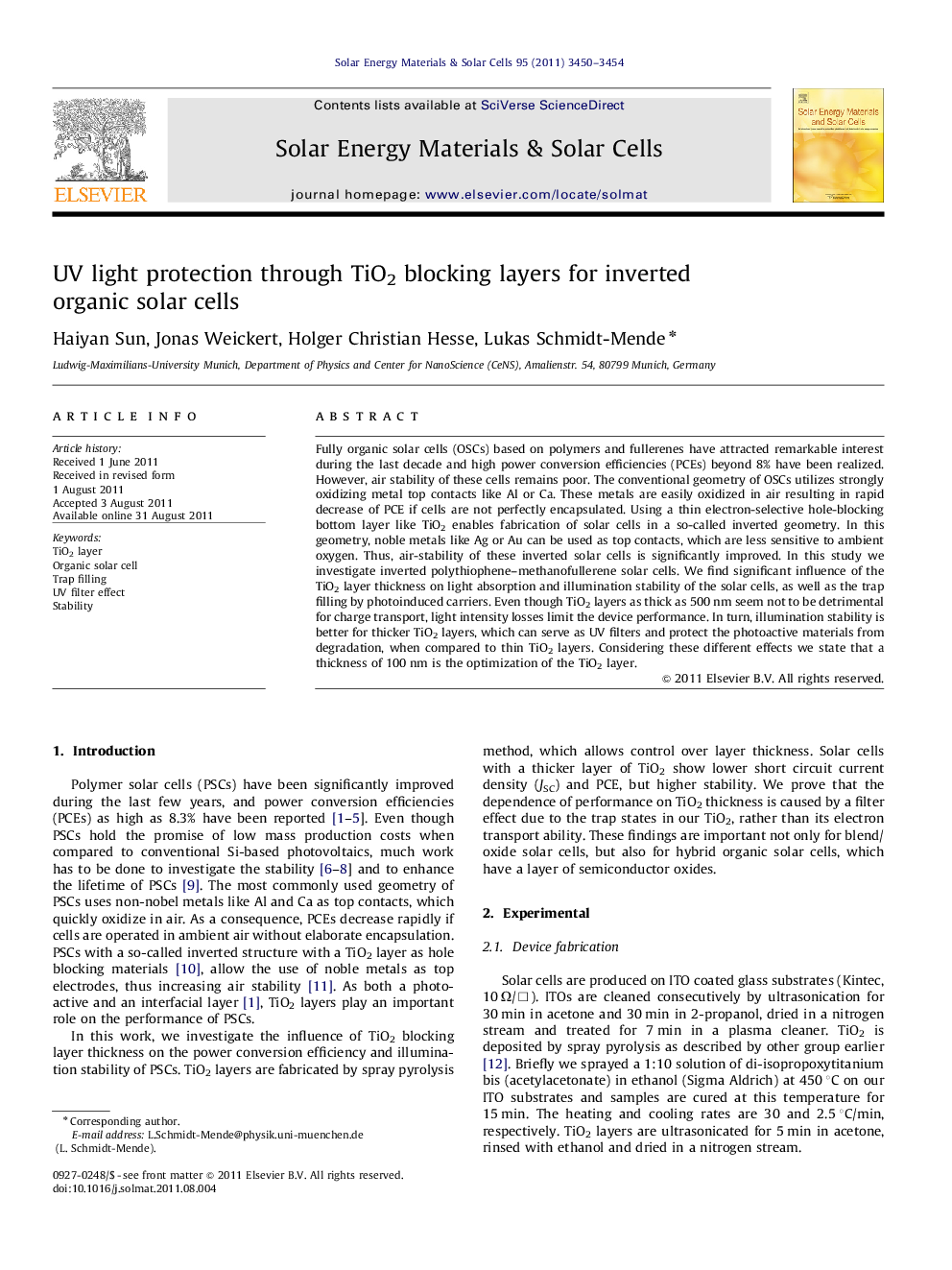| کد مقاله | کد نشریه | سال انتشار | مقاله انگلیسی | نسخه تمام متن |
|---|---|---|---|---|
| 79650 | 49362 | 2011 | 5 صفحه PDF | دانلود رایگان |

Fully organic solar cells (OSCs) based on polymers and fullerenes have attracted remarkable interest during the last decade and high power conversion efficiencies (PCEs) beyond 8% have been realized. However, air stability of these cells remains poor. The conventional geometry of OSCs utilizes strongly oxidizing metal top contacts like Al or Ca. These metals are easily oxidized in air resulting in rapid decrease of PCE if cells are not perfectly encapsulated. Using a thin electron-selective hole-blocking bottom layer like TiO2 enables fabrication of solar cells in a so-called inverted geometry. In this geometry, noble metals like Ag or Au can be used as top contacts, which are less sensitive to ambient oxygen. Thus, air-stability of these inverted solar cells is significantly improved. In this study we investigate inverted polythiophene–methanofullerene solar cells. We find significant influence of the TiO2 layer thickness on light absorption and illumination stability of the solar cells, as well as the trap filling by photoinduced carriers. Even though TiO2 layers as thick as 500 nm seem not to be detrimental for charge transport, light intensity losses limit the device performance. In turn, illumination stability is better for thicker TiO2 layers, which can serve as UV filters and protect the photoactive materials from degradation, when compared to thin TiO2 layers. Considering these different effects we state that a thickness of 100 nm is the optimization of the TiO2 layer.
► Compact TiO2 layers in inverted organic solar cells act as UV light protection layer.
► The illumination stability is better for thicker TiO2 layers, but absorption losses in the TiO2 film limit the performance.
► The optimal thickness for TiO2 layers prepared by spray pyrolysis is 100 nm.
Journal: Solar Energy Materials and Solar Cells - Volume 95, Issue 12, December 2011, Pages 3450–3454